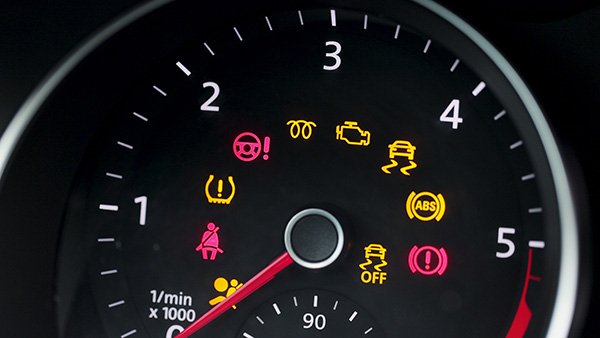
Modern vehicles rely on electronic systems to enhance both performance and safety. Among the most important are the ABS (Anti-lock Braking System), traction control, and electronic stability control. These features work together to keep your vehicle steady and responsive, especially in slippery or emergency situations.
But what happens when one sensor—just a single component—goes bad? Surprisingly, that’s often enough to trigger warning lights and cause these systems to malfunction. Understanding how these systems work and why sensors are so crucial can help you catch problems early and keep your vehicle safe on the road.
The Role of ABS, Traction, and Stability Systems
Each of these systems uses information from sensors placed throughout your vehicle to monitor wheel speed, steering input, yaw rate, and more.
- ABS prevents your wheels from locking up during hard braking, helping maintain steering control.
- Traction control reduces wheel spin when you accelerate on a slippery surface by adjusting power or applying the brakes.
- Stability control helps prevent skidding or sliding by applying individual brakes or reducing engine power.
These systems share information with each other, and most rely on the same set of wheel speed sensors and a central control module. That means if a single sensor fails, all three systems can be affected.
Why One Sensor Can Create Multiple Problems
Wheel speed sensors are among the most common failure points. These sensors monitor how fast each wheel is rotating. If one sensor stops sending correct data, the system can't accurately judge whether a wheel is slipping or locked up.
Your car’s computer depends on consistent and synchronized information. If one wheel appears to be spinning faster or slower than the others, the vehicle may falsely detect a skid or wheel lock—even if nothing is wrong. The system then reacts, often by disabling traction and stability control and turning on dashboard warning lights.
Other types of sensors involved include:
- Yaw rate sensors that detect the car’s rotation around its center point.
- Steering angle sensors that track the position and direction of the steering wheel.
- Brake pressure sensors measure how hard you're pressing the brake pedal.
Failure in any of these sensors can confuse the vehicle’s control unit, leading to unexpected system shutdowns or false interventions while driving.
Common Warning Signs of Sensor Issues
When a sensor fails, your vehicle will usually alert you with one or more dashboard lights. Common indicators include:
- ABS light
- Traction control light
- Stability control (ESC) light
- A general “check engine” light in some cases
- You may also experience other symptoms:
- Pulsating brakes even under normal braking
- Delayed or harsh brake response
- Loss of anti-lock braking during emergency stops
- Slipping or spinning wheels on wet surfaces without traction control engaging
It’s essential to note that these systems often shut down as a precaution when something appears to be off. This is done to prevent false activations that could interfere with your control of the vehicle.
What Causes Sensors to Fail
Most sensors are exposed to road debris, water, heat, and vibration. Over time, this can cause:
- Sensor wires to corrode or fray
- Connectors to come loose
- Sensors to become misaligned or damaged
- Metal fragments or dirt to interfere with magnetic sensors
Some sensors, like wheel speed sensors, are located near the brakes and can be damaged during unrelated repairs or brake service if not handled properly.
Can You Still Drive With Sensor Problems
While your vehicle may still be drivable, you’ll be without important safety features. Driving with disabled ABS, traction, or stability systems can increase the risk of skidding or losing control in poor conditions.
Also, driving long-term with faulty sensors can affect other systems. For example, a failing wheel speed sensor may also interfere with cruise control, electronic power steering, or even your all-wheel drive system.
Prompt diagnostics are always recommended to avoid cascading issues.
How Technicians Diagnose and Fix the Problem
Diagnosing a sensor problem requires scanning your vehicle’s onboard computer for error codes. A skilled technician can tell which sensor is misbehaving and run additional tests to confirm whether it’s a wiring issue, sensor failure, or a deeper problem within the system.
Repairs may involve:
- Replacing the faulty sensor
- Cleaning or realigning the sensor if it’s dirty or mispositioned
- Repairing corroded or broken wiring
- Updating system software if needed
In most cases, resolving a sensor issue restores full functionality to all connected systems.
Keep Your Safety Systems in Check at Sherman Oaks Exclusive
At Sherman Oaks Exclusive in Sherman Oaks, CA, we have years of experience diagnosing complex electronic issues in European vehicles, including sensor failures that affect ABS, traction control, and stability systems. If you're seeing warning lights or noticing odd brake behavior, don't wait.
Our expert technicians will perform thorough diagnostics, explain the issue clearly, and restore your vehicle’s safety features so you can drive with confidence. Schedule your inspection today and ensure your vehicle's advanced systems are functioning properly.